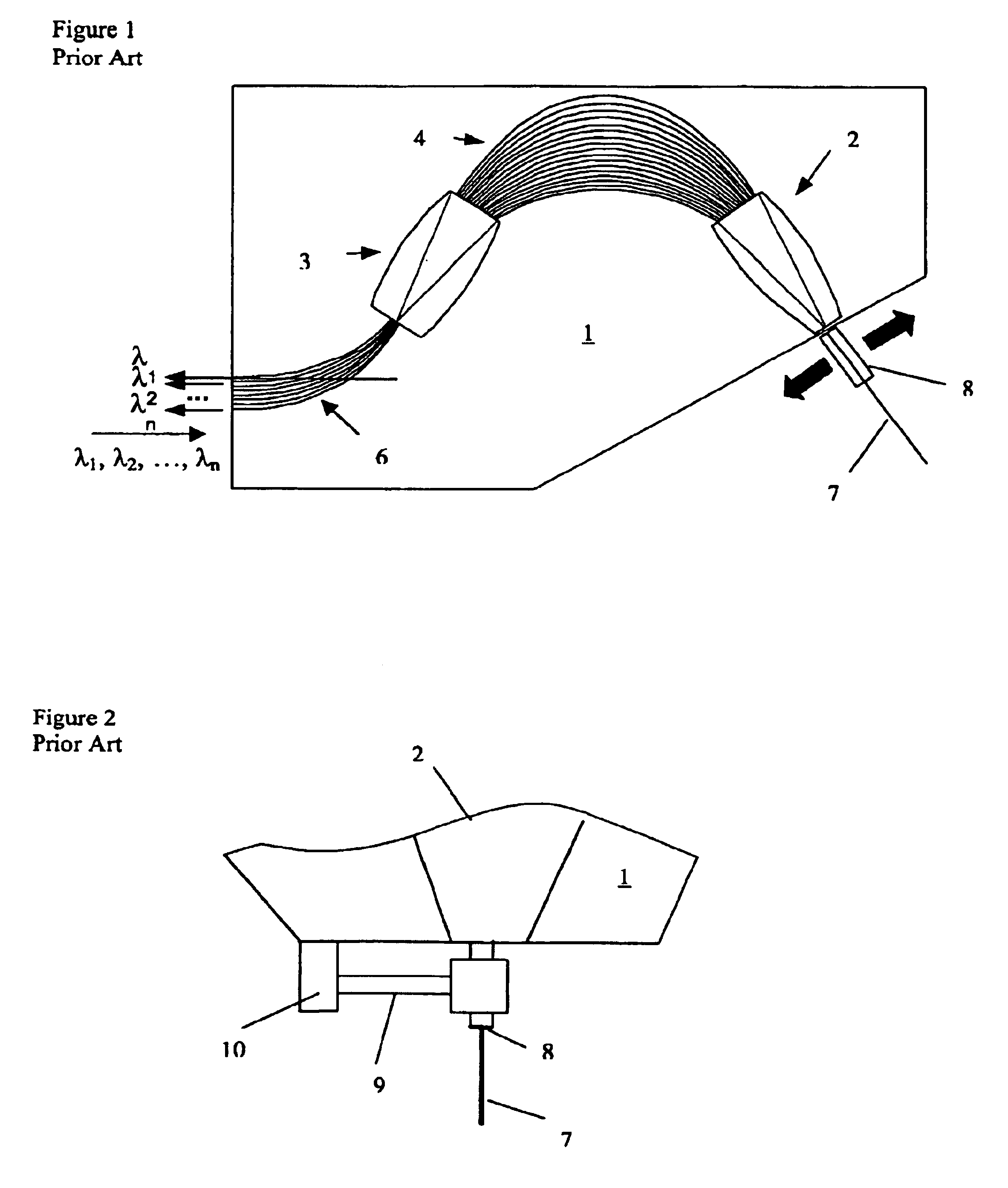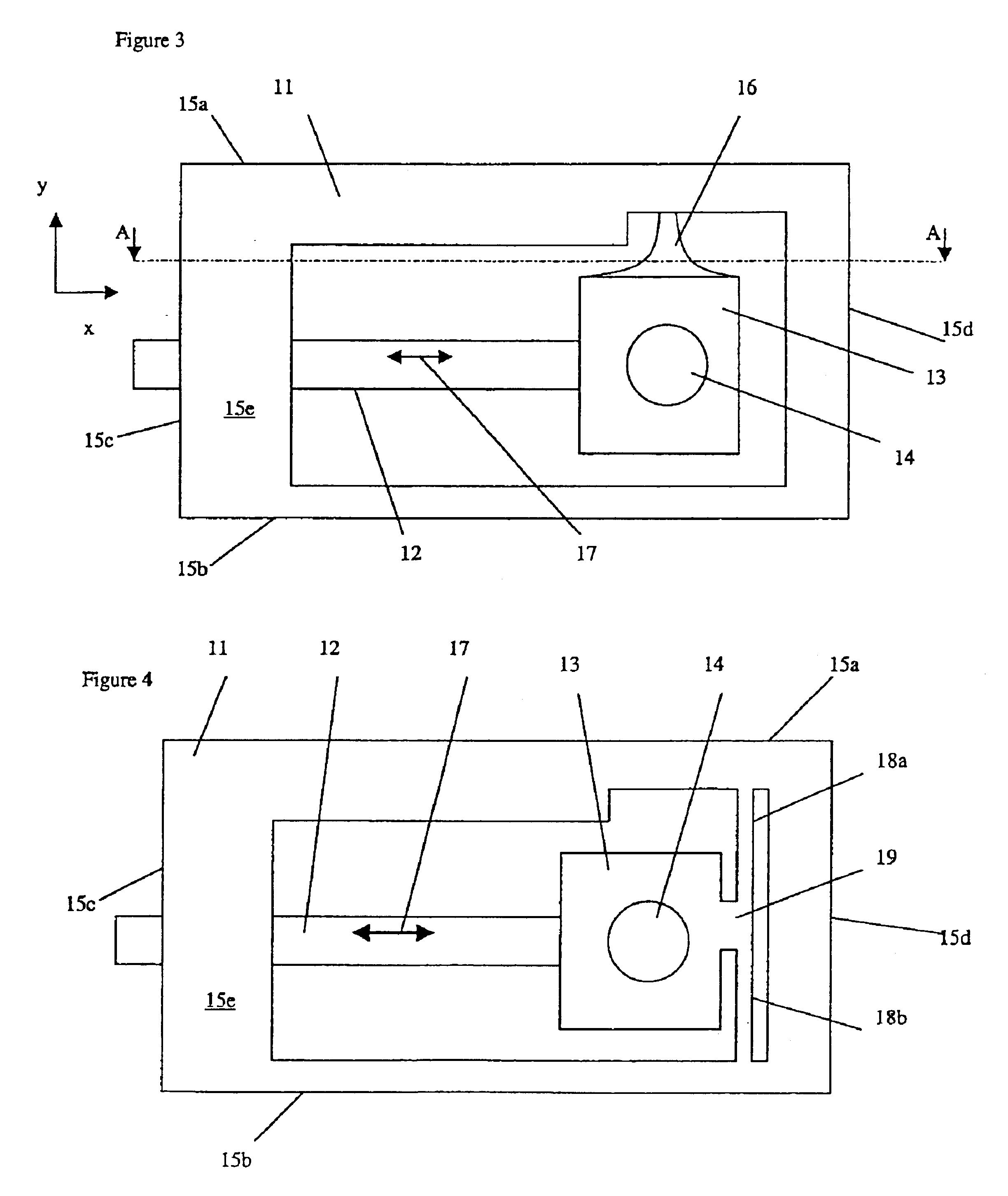Athermal optical coupler
- Summary
- Abstract
- Description
- Claims
- Application Information
AI Technical Summary
Benefits of technology
Problems solved by technology
Method used
Image
Examples
second embodiment
the present invention, illustrated in FIG. 4, is similar to the aforementioned embodiment except that the flexible arm 16 is replaced with a pair of flexible arms 18a and 18b, joined to the side of the waveguide block 13 opposite the expansion element 12 at joint 19. With this arrangement, the waveguide block 13 is completely restrained from moving in the y direction, i.e. perpendicular to the expansion direction 17, by an arm on either side thereof. The arms 18a and 18b are preferably planar, web-like members joined to the upper frame member 15a and the lower frame members 15b, respectively, and extending from the front face 15e of the frame 11 to the rear face 15f. With this arrangement, the frame 11, the arms 18a and 18b, and the waveguide block 13 can be constructed from a single block of low CTE material. The manufacturing process starts by milling out the voided areas from the front face 15e through to the rear face 15f, thereby making only the front and rear faces 15e and 15f...
PUM
 Login to View More
Login to View More Abstract
Description
Claims
Application Information
 Login to View More
Login to View More - R&D
- Intellectual Property
- Life Sciences
- Materials
- Tech Scout
- Unparalleled Data Quality
- Higher Quality Content
- 60% Fewer Hallucinations
Browse by: Latest US Patents, China's latest patents, Technical Efficacy Thesaurus, Application Domain, Technology Topic, Popular Technical Reports.
© 2025 PatSnap. All rights reserved.Legal|Privacy policy|Modern Slavery Act Transparency Statement|Sitemap|About US| Contact US: help@patsnap.com



